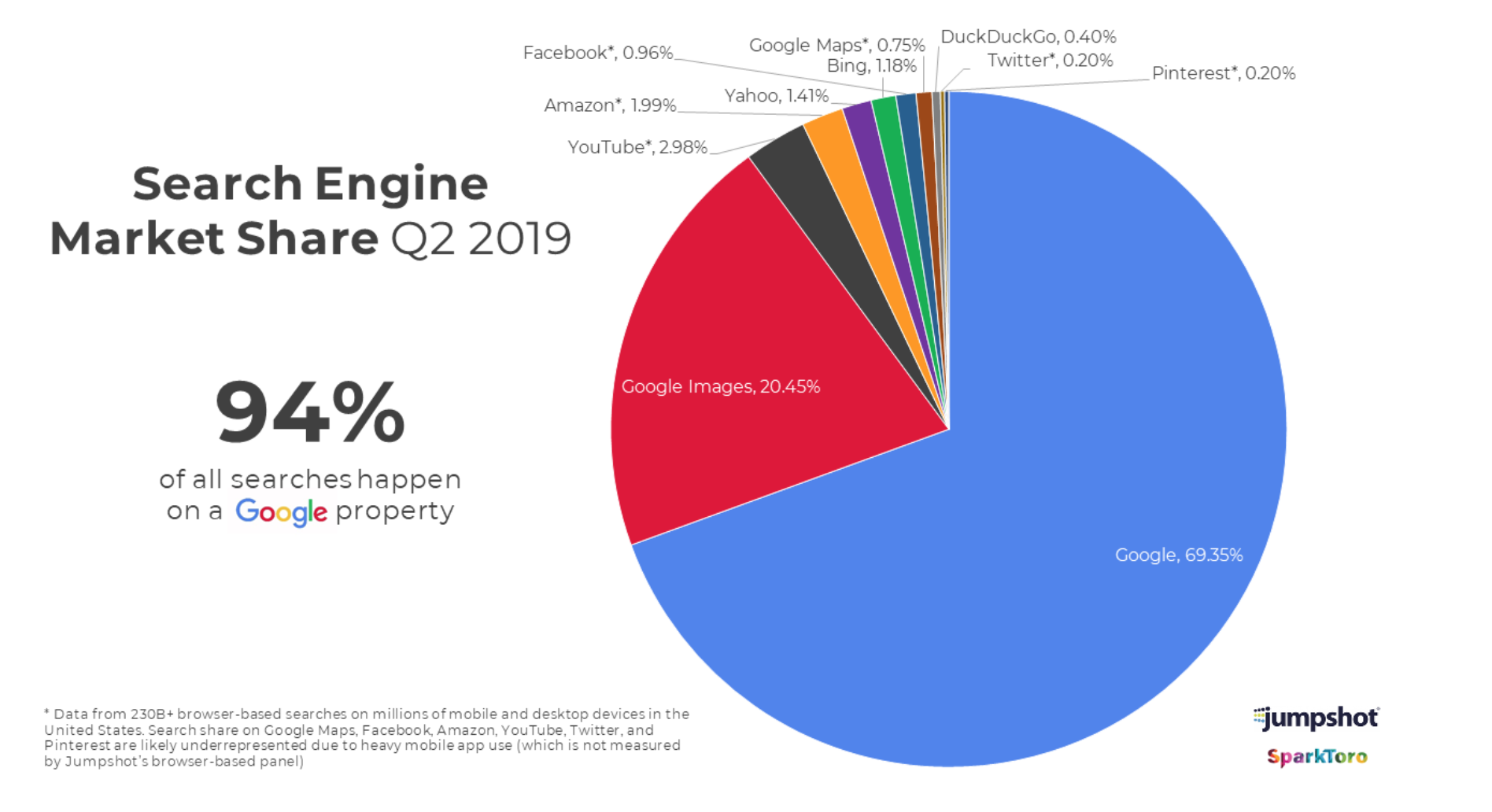Ever get that feeling that your organic traffic isn’t moving? Or that your high ranking content doesn’t get the love it deserves?
You’re not alone.
A report released this week by SparkToro and JumpShot showed that just over 50% of Google searches don’t get clicked.
Let’s allow that to sink in. More than HALF. That’s a terrifying statistic for any sales and marketing team.
(courtesy of sparktoro)
What you need to know
First off, like anything related to Google, the headline statistic tells only part of the story. While it is true that users are increasingly getting their answers without clicking through to an actual website, clicks for desktop searches have remained basically consistent for the past few years, with updates like featured snippets playing a part in the small changes that have occurred.
We have seen organic click-through-rates for desktop searches fall from 68% in 2016 to 66% today.
However, we've seen bigger movement in mobile search. By contrast, the the same metric in mobile has fallen from 44% to 36% over the same span.
Similarly, while the percentage of zero-click searches increased modestly on desktops, the same number in mobile searches increased by 6% during the past four years.
Lastly, while traffic to PPC ads has been fairly steady on desktop searches, it has risen for mobile users, growing from 3.34% in 2016 to 11.38% in 2019.
What you should do
The most significant take away from this report should be the importance of optimizing your page titles and meta descriptions so that they are exceedingly valuable and clear to the user.
With vague, non-optimized titles and descriptions, you risk users not clicking because they doubt you can answer their question.
Take time to go through your top-ranking pages and review your page titles and descriptions from the user’s point of view. If you were you put in a search query and see that content, would you click it? Does it tell you everything you need to know? Perhaps you have some tweaking to do.
Additionally, focus on achieving Position Zero for your top searches.
By ranking in the “zero spot,” you’ll be the first thing seen in the results page, and with the proper optimization, this can dramatically improve your click-throughs — and make you a trusted source of information, even if an actual click doesn’t happen.
The Google monopoly
More alarming, perhaps, than any of this data is another search algorithm tendency summarized in the report. Google Search frequently directs traffic to content held by company subsidiaries. Google Maps, YouTube, and Google Images represent significant traffic pathways.
Recent congressional hearings have focused on this, specifically. In an exchange before the House Judiciary Committee last month, Representative David Cicilline from Rhode Island asked a Google executive the following:
“If innovators and entrepreneurs don’t have traffic to their websites because Google Search is rigged in favor of Google’s own services by keeping [searchers] inside Google’s walled garden, then the internet as we know it ceases to be an engine of economic opportunity.”
In other words, what will make Google choose fairness over profitability? Or, to counter, are Google’s products simply the best answers to people’s questions?
For reference, here is search engine market share for Q2, 2019:
 (courtesy of sparktoro)
(courtesy of sparktoro)
Final thoughts
Although it is shocking to see graphs like the ones above, they represent shifts that have been happening slowly for years.
As always, this is a reminder that we need to create great content to stand out in a crowded marketplace. Optimizing all aspects of your content is essential. If a searcher is getting an answer from a featured snippet or a meta description, it should reinforce the importance of these aspects of your content.
More broadly, we must remember that Google is a private company seeking to maximize revenue. Accordingly, we must stay abreast of its updates and changes, and keep in mind how we can use this tool to build our brand, attract our customers, and engage our prospects.
Free: Assessment


